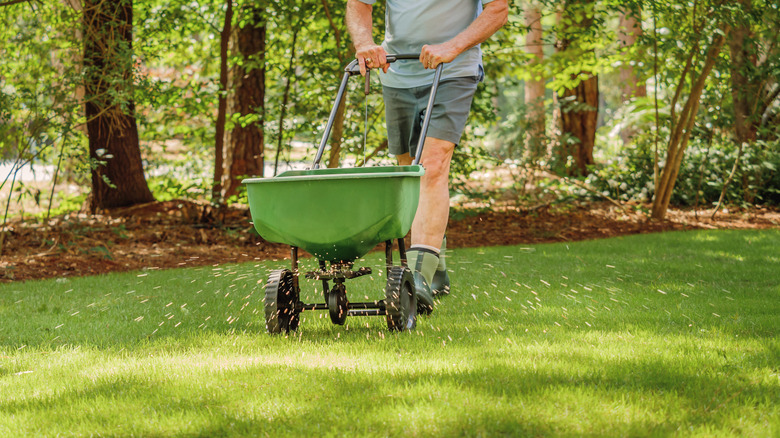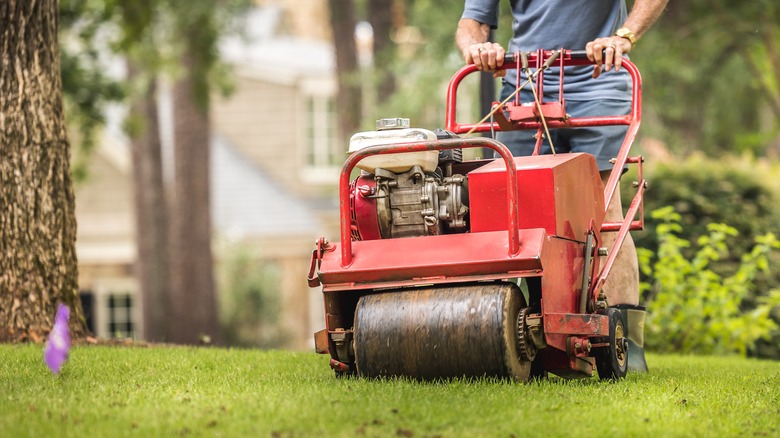What You Should Know About Seeding Your Lawn
Are you looking at your lawn, wondering what can be done to help it look thick and lush? Perhaps your neighbor's lawn just looks so much more enjoyable to walk through and feel under your feet. While you shouldn't trample your neighbor's yard, there are steps you can take to help improve the overall feel of your lawn. Seeding, also called overseeding, your lawn could be one of them.
According to Ryan, overseeding the lawn is the process of adding seed to your existing lawn with the goal of filling in all of those bare spots without actually tearing into the soil. Unlike planting sod or a whole new lawn, you're just adding more seed to the surface of the soil to encourage grass to fill all of the open areas. There are lots of benefits to doing this, but before you head out to buy grass seed, there are a few first steps to consider first.
Know when to seed the lawn
Timing matters when it comes to seeding the lawn because the individual grass seeds need enough time to take root before adverse weather strikes. You want to give the seeds the best possible chance to germinate into beautiful, healthy grass. If you're not sure when to do so, speak to a local garden center for more insight into when to expect that first frost.
Pennington states that it is best to aim for no longer than 45 days prior to the estimated first frost during the fall months if you are planting cool-season grass. Planting during the fall provides the grass time to begin growing and come in thicker. Doing this during the cooler months is likely to be more successful due to the favorable conditions. For warm-season grasses, aim for the spring months when the temperature of your soil is at least 65 to 70 degrees Fahrenheit. That's going to give grass seed the right conditions to germinate and take root before the high temperatures develop.
Ensure the soil is prepped for the best chance for success
Taking a few extra steps may help your lawn come in looking its best. First, have the soil tested through a local home improvement or garden store to find out the nutrient levels in the soil. Grass needs three key nutrients to grow: potassium, phosphorus, and nitrogen, according to The Turfgrass Group. If it's lacking, it may be necessary to add fertilizer to improve the overall composition.
It may also be beneficial to aerate the lawn prior to seeding to help pull up some of the thatch that makes it hard for air and moisture to get into the soil itself. Davey states that, most often, if you are placing grass seed on compacted, dead material, the seeds cannot germinate. Aeration can help to open up the soil to allow more moisture while also loosening it, which gives the small roots of grass seeds more space to grab hold and grow.


